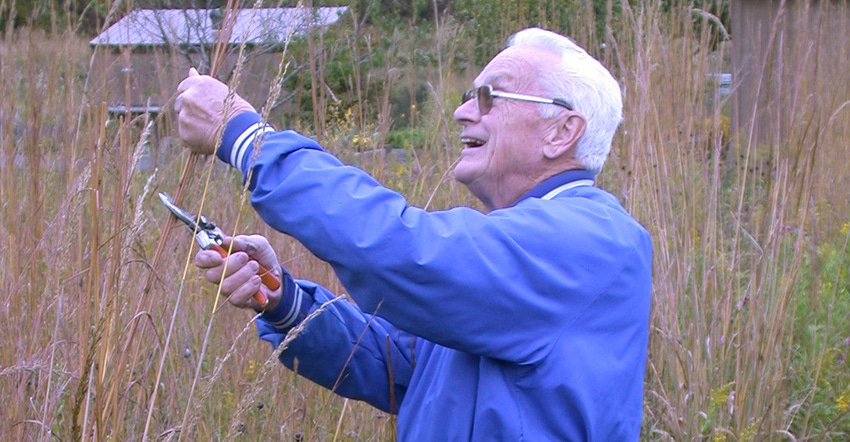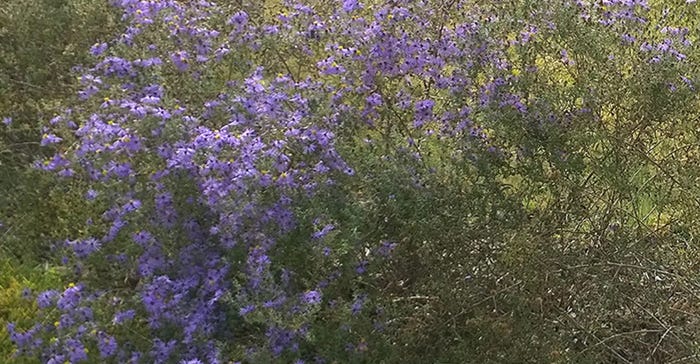November 14, 2018

How native plants survive and move across the state remains a mystery. Could the stately grove of shortleaf pine be from an ex-logger in the 1950s who moved from the Ozarks to St. Louis for a job? Or did the seedlings come from the Missouri Department of Conservation George White Nursery, back in the early days when seedlings were grown to reforest timber harvests? Better yet, were they dug and transplanted in coke bottles, one-by-one during family camping trips to the Ozarks? Either way, it’s a mystery. But what is not, is the fact that native plants and trees continue to survive throughout the generations.
Adding to the collection
Native plants that are long-lived include wild indigo, giant cane, and big bluestem.
White wild indigo is a curious plant, one that can play a disappearing act. Now you see it, now you don’t — because it can go dormant for a few years and reappear.
Native giant cane, not to be confused with Oriental yellow-groove bamboo, is a plant with staying power. I know of two patches near old farm houses in Dutzow and Union. They are easy to see in winter because they are evergreen. They survive the test of time because they tolerate shade, flooding, drought and cattle grazing. At one time they were made into fishing rods, pipe stems, garden stakes and fire crackers. Throw a fresh green stem segment in a campfire and you will discover why they are called “bam”boo.
Big bluestem grass can live for hundreds of years in the wild. Obviously, I don’t know this first-hand, but am told by my elder colleagues that large clumps in remnant prairies can be very old. The oldest ones grow in the shape of a doughnut or crescent with other species growing in the middle.
 TEST OF TIME: An aromatic aster cluster still stands in a lawn. It is a native plant that can withstand time and the weather, making it ideal for those wanting longevity in their landscape.
TEST OF TIME: An aromatic aster cluster still stands in a lawn. It is a native plant that can withstand time and the weather, making it ideal for those wanting longevity in their landscape.

Bill Schuler, a former volunteer at Shaw Nature Reserve, grew big bluestem surrounded by lawn at his home near Union, and he had great fun showing it to friends and collecting seeds to share. He was amused by the colorful “striped” eight-foot tall stems and flower clusters that resemble a turkey foot. He truly had fun with big bluestem perhaps because he endured the ups and downs of life through laughter and song.
Brightening the landscape
I’m grateful for and fascinated by the things that stick around a long while. Like a bur oak that spans generations yet keeps getting better with age, or a patch of daffodils that outlives the usefulness of an old farm house. These are beacons of familiarity and beauty that may go unnoticed in a rapidly shifting world, but subtly light up the world like the decades-old aromatic aster clump surrounded by lawn by an old house up the road.
Life is short. There is so much fun to be had when you garden with native plants, so what are you waiting for?
Woodbury is a horticulturist and the curator of the Whitmire Wildflower Garden at Shaw Nature Reserve in Gray Summit, where he has worked with native plant propagation, design, and education for 27 years. He also is an adviser to the Missouri Prairie Foundation’s Grow Native! program.
About the Author(s)
You May Also Like




